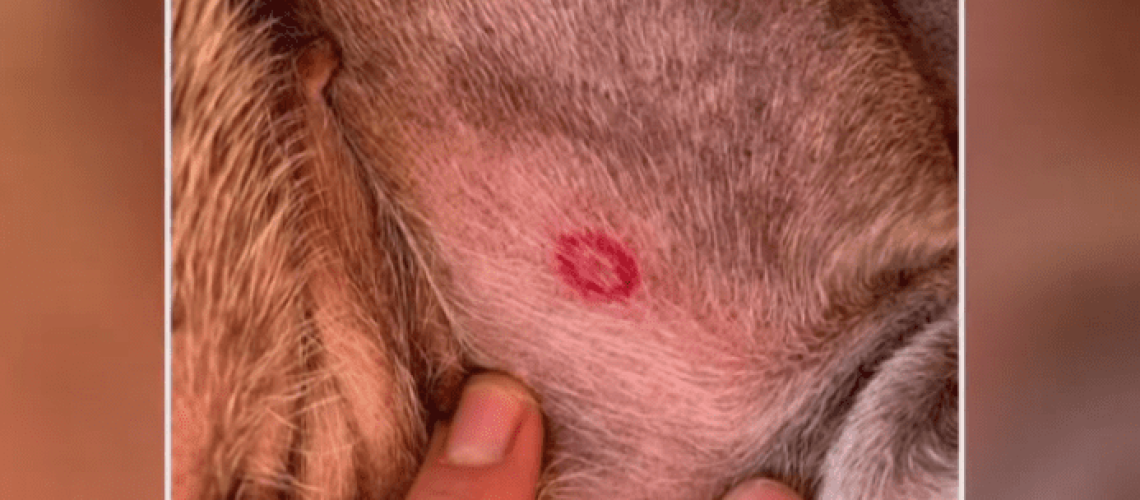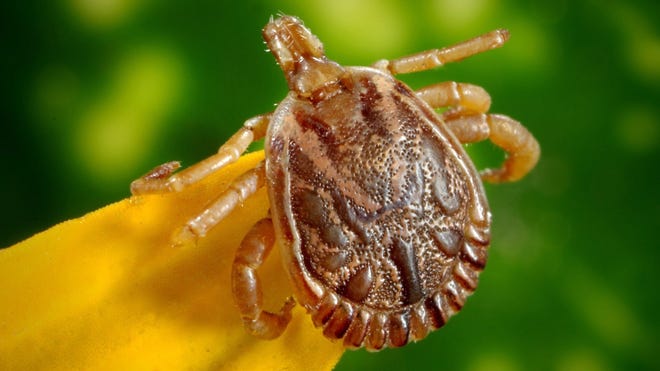Tick bites in puppies can pose serious health risks. These tiny parasites can transmit diseases and cause discomfort for our furry friends. It is crucial to be vigilant and take preventive measures to protect our puppies from ticks and their potential consequences.
Key Takeaways:
- Tick bites in puppies can lead to various health problems, including infections and diseases.
- Regularly checking for ticks on your puppy and promptly removing them is crucial in preventing tick-borne illnesses.
- Tick prevention methods such as using tick repellents and keeping the puppy's environment clean can significantly reduce the risk of tick bites.
- It is important to consult a veterinarian if you notice any signs of tick infestation or if your puppy develops symptoms after a tick bite.
- Education about tick-borne diseases and their prevention is essential for pet owners to ensure the well-being of their puppies.
Understanding Tick Bites and Their Impact on Puppies
What are ticks?
Ticks are small, blood-sucking insects that can attach themselves to the skin of animals, including puppies. They have a round body and eight legs. Ticks are commonly found in grassy areas or wooded regions where they wait for an animal to pass by so they can latch onto their skin.
How do ticks attach to a puppy's body?
Ticks use their sharp mouthparts to pierce the skin of a puppy and feed on its blood. They secrete a substance that makes it easier for them to stay attached. Ticks prefer warm and moist areas such as the ears, armpits, and groin of a puppy. Once attached, ticks can stay on a puppy for several days or even weeks, feeding on its blood.
Potential Health Problems from Tick Bites in Puppies
Tick-borne diseases
Ticks can transmit diseases to puppies through their bites. Some common tick-borne diseases include Lyme disease, Rocky Mountain spotted fever, and Ehrlichiosis. These diseases can cause symptoms such as fever, lethargy, joint pain, and loss of appetite in puppies. If left untreated, tick-borne diseases can lead to more serious health issues.
Anemia
Tick infestations can also lead to anemia in puppies. Anemia is a condition where there is a decrease in the number of red blood cells in the body. This can result in weakness, pale gums, and fatigue in puppies. Severe cases of anemia may require veterinary treatment.
Signs of Tick Bites: What to Look Out for in Your Puppy
Ticks are often difficult to spot on a puppy's fur due to their small size. However, there are some signs that may indicate your puppy has been bitten by a tick. These signs include:
- Redness or swelling at the site of the bite
- Itching or scratching in a specific area
- A small bump or scab on the skin
- Lethargy or decreased energy levels
If you notice any of these signs, it is important to check your puppy for ticks and seek veterinary advice if necessary.
Checking for Ticks on Your Puppy: A Step-by-Step Guide
1. Start by examining your puppy's ears, as ticks often hide in this area.
2. Gently part your puppy's fur and look closely for any small, dark spots that could be ticks.
3. Use your fingers or a fine-toothed comb to carefully search through your puppy's fur, paying attention to warm and moist areas.
4. If you find a tick, use tweezers or a tick removal tool to grasp the tick as close to the skin as possible.
5. Slowly and steadily pull the tick straight out without twisting or crushing it.
6. Clean the area with antiseptic and monitor your puppy for any signs of infection.
Preventing Tick Bites in Puppies: Essential Measures to Take
To prevent tick bites in puppies, here are some essential measures you can take:
- Keep your puppy away from areas with tall grass or dense vegetation where ticks are commonly found.
- Use tick prevention products recommended by your veterinarian, such as topical treatments or tick collars.
- Regularly groom and inspect your puppy's fur for any signs of ticks.
- Consider vaccinating your puppy against certain tick-borne diseases if recommended by your veterinarian.
Taking these preventive measures can greatly reduce the risk of tick bites and keep your puppy healthy.
Finding a Tick on Your Puppy: Here's What You Should Do
If you find a tick on your puppy, it is important to remove it as soon as possible. Follow these steps to safely remove a tick from your puppy:
1. Use tweezers or a tick removal tool to grasp the tick as close to the skin as possible.
2. Slowly and steadily pull the tick straight out without twisting or crushing it.
3. Clean the area with antiseptic to prevent infection.
4. Dispose of the tick by placing it in a sealed container or flushing it down the toilet.
5. Monitor your puppy for any signs of illness or infection in the following days.
Remember to consult your veterinarian if you have any concerns or if your puppy shows any unusual symptoms after a tick bite.
Different Types of Ticks and Their Impact on Puppies
There are several different types of ticks that can affect puppies, including:
- Brown Dog Tick: This type of tick is commonly found in warm climates and can transmit diseases such as Rocky Mountain spotted fever and canine ehrlichiosis.
- Deer Tick: Deer ticks are known carriers of Lyme disease, which can cause joint pain and other symptoms in puppies.
- American Dog Tick: These ticks are often found in grassy areas and can transmit diseases like tularemia and Rocky Mountain spotted fever.
Each type of tick has its own unique impact on puppies, but all should be taken seriously. It is important to protect your puppy from all types of ticks to ensure their overall health and well-being.
Minimizing the Risk of Tick-Borne Diseases from Puppies to Humans
Ticks not only pose a risk to puppies but also to humans. To minimize the risk of tick-borne diseases spreading from puppies to humans, follow these precautions:
- Avoid direct contact with ticks by wearing long sleeves, pants tucked into socks, and closed-toe shoes when in tick-prone areas.
- Use insect repellents containing DEET on exposed skin and clothing.
- After outdoor activities, thoroughly check yourself and your puppy for ticks, paying close attention to warm and moist areas.
- Promptly remove any ticks you find using tweezers or a tick removal tool.
By taking these precautions, you can reduce the chances of tick-borne diseases affecting both puppies and humans. It is always important to prioritize the health and safety of both yourself and your furry friend.
Preventing Tick Infestations in Puppies
Puppies are particularly vulnerable to tick infestations, as their immune systems are still developing and they may not have received all necessary vaccinations. To minimize the risk of tick-borne diseases in puppies, it is important to take preventive measures.
Regular Tick Checks
Performing regular tick checks on your puppy can help identify and remove ticks before they have a chance to transmit any diseases. Carefully inspect your puppy's fur, paying close attention to areas such as the ears, armpits, groin, and between the toes where ticks tend to hide.
Tick Preventive Medications
Consult with your veterinarian about appropriate tick preventive medications for your puppy. These medications come in various forms such as topical treatments or oral tablets. They work by either repelling ticks or killing them upon contact. Follow the recommended dosage and application instructions provided by your veterinarian.
Reducing Tick Exposure in Humans
Ticks not only pose a threat to puppies but also to humans who come into contact with them. Taking precautions can significantly reduce the risk of tick-borne diseases in humans.
Wear Protective Clothing
When venturing into areas where ticks are commonly found, such as wooded or grassy areas, it is advisable to wear long-sleeved shirts, long pants tucked into socks, and closed-toe shoes. This creates a physical barrier between ticks and your skin, making it harder for them to attach themselves.
Tick Repellents
In addition to protective clothing, using insect repellents that contain DEET or picaridin can provide added protection against ticks. Apply these repellents according to the instructions on the product label, focusing on exposed skin areas.
Perform Tick Checks
After spending time outdoors in tick-prone areas, thoroughly check your body for ticks. Pay close attention to areas such as the scalp, behind the ears, underarms, groin, and behind the knees. Promptly remove any ticks you find using tweezers or a tick removal tool.
Create Tick-Safe Environments
To minimize the presence of ticks in your surroundings, keep grass and vegetation well-trimmed. Remove leaf litter and clear brush from around your home and recreational areas. This reduces potential tick habitats and lowers the risk of encountering them.
| Conclusion | |
| Tick bites can be a serious concern for puppies, but with proper prevention and prompt action, the risks can be minimized. | Remember to regularly check your puppy for ticks, use preventive measures recommended by your veterinarian, and seek immediate veterinary attention if you notice any signs of tick-borne illnesses. By being proactive, you can ensure the health and well-being of your furry friend. |
What are the symptoms of tick disease in puppies?
Common indicators of tick-borne illnesses in canines include fever, vomiting, lethargy, swelling near joints, and lameness. Additional signs might include muscle discomfort and diarrhea.
How long after a tick bite will a dog show symptoms?
After a dog is infected with the bacteria, it may take up to 14 days for symptoms to appear. The symptoms of tick fever in dogs are often ambiguous and can vary greatly, which can make diagnosing tick fever difficult in certain cases.
How do you treat a puppy with ticks?
Giving your pet a thorough bath in a tub of water is an effective way to eliminate most ticks from their body. Additionally, using a gentle pet shampoo and thoroughly brushing their fur can also help remove most ticks from your pet.
What if my 8 week old puppy gets bit by a tick?
If your puppy gets bitten by a tick but doesn't show any signs of illness, it may not be necessary to take them to the veterinarian. However, if your puppy starts displaying symptoms such as fever, swollen lymph nodes, or limping after being in an area with a lot of ticks, it's important to seek a diagnosis from your vet.
Should dogs go to vet after tick bite?
According to most veterinarians, it is not necessary to take your dog to the vet after a tick bite. However, it is important to carefully observe your dog for any signs or symptoms of Lyme disease for the following weeks or months.
What does Lyme disease look like in a puppy?
Dogs that contract Lyme disease often experience intermittent episodes of limping due to inflammation in their joints. This limping can last for a few days and then reoccur later, either in the same leg or in different legs. This condition is referred to as "shifting-leg lameness." It is common for one or multiple joints to be swollen, warm, and painful.

















